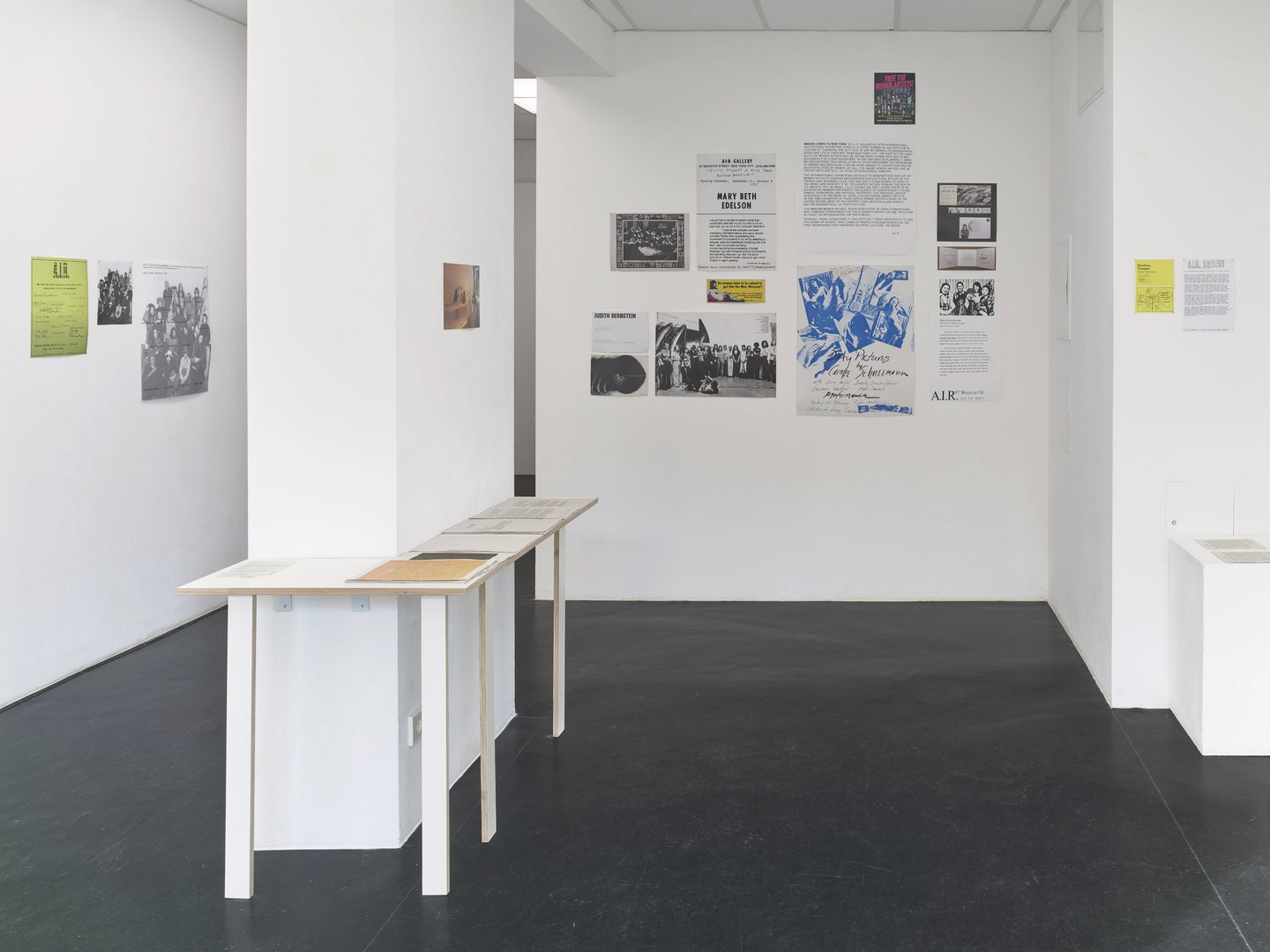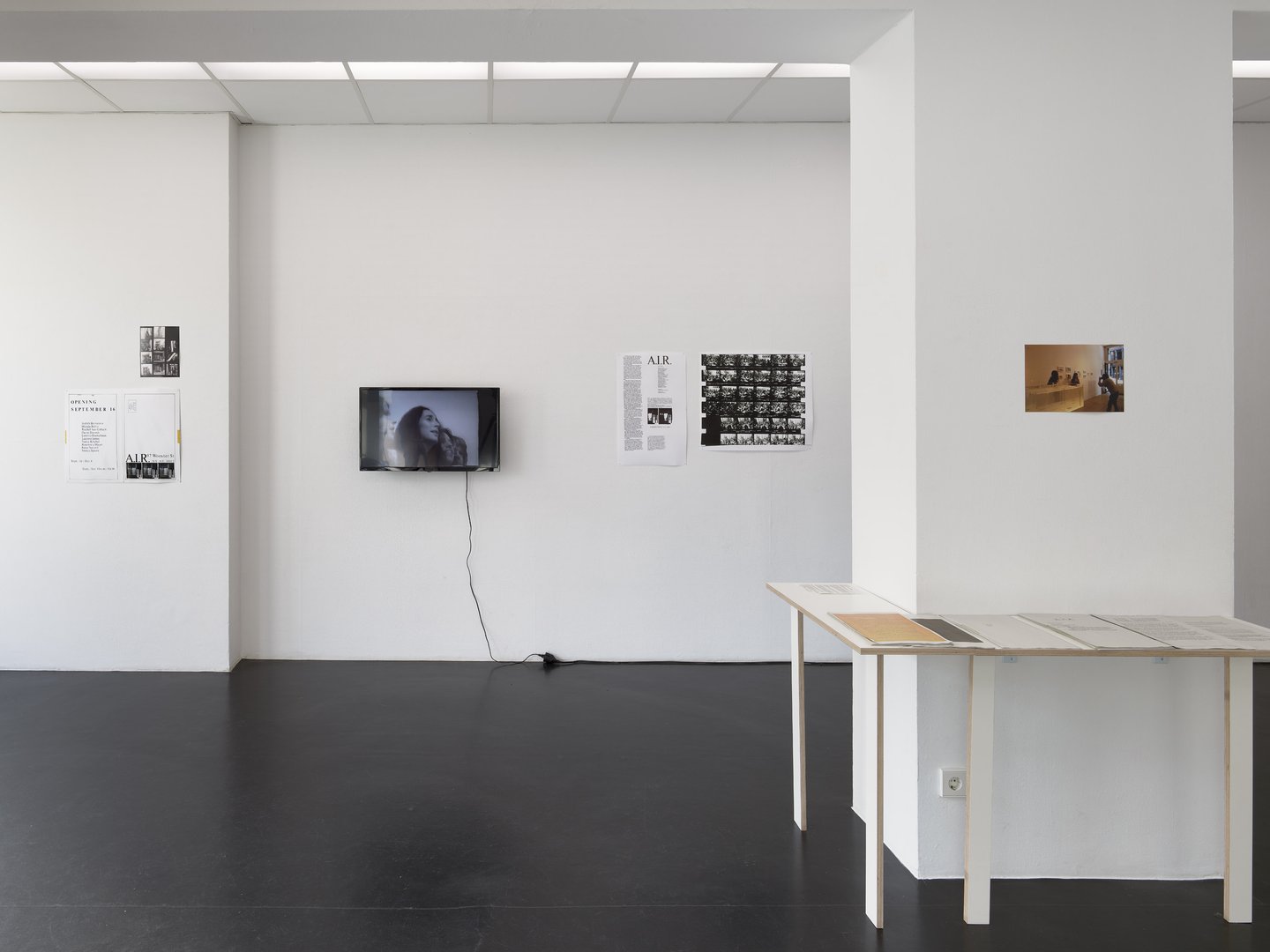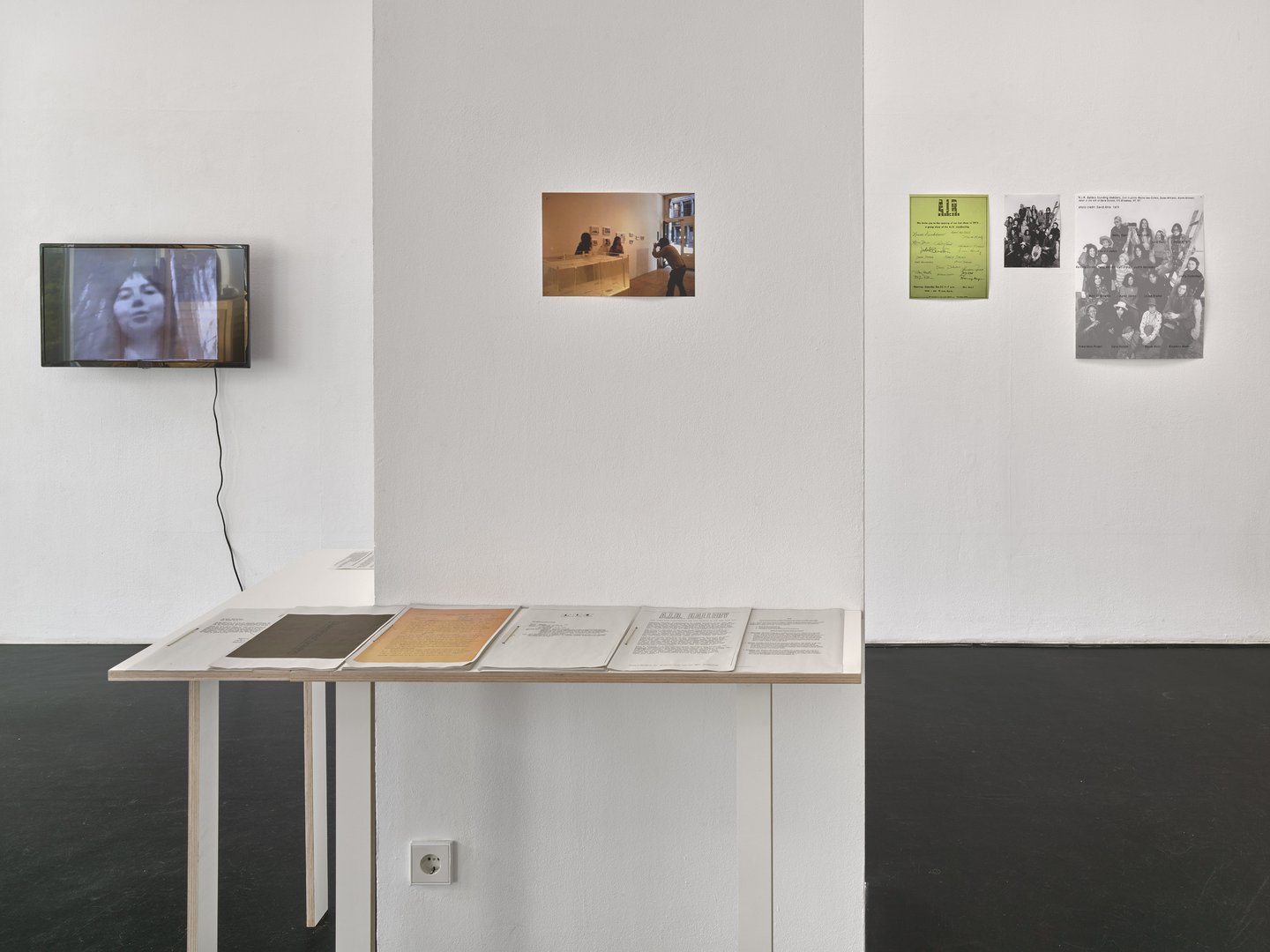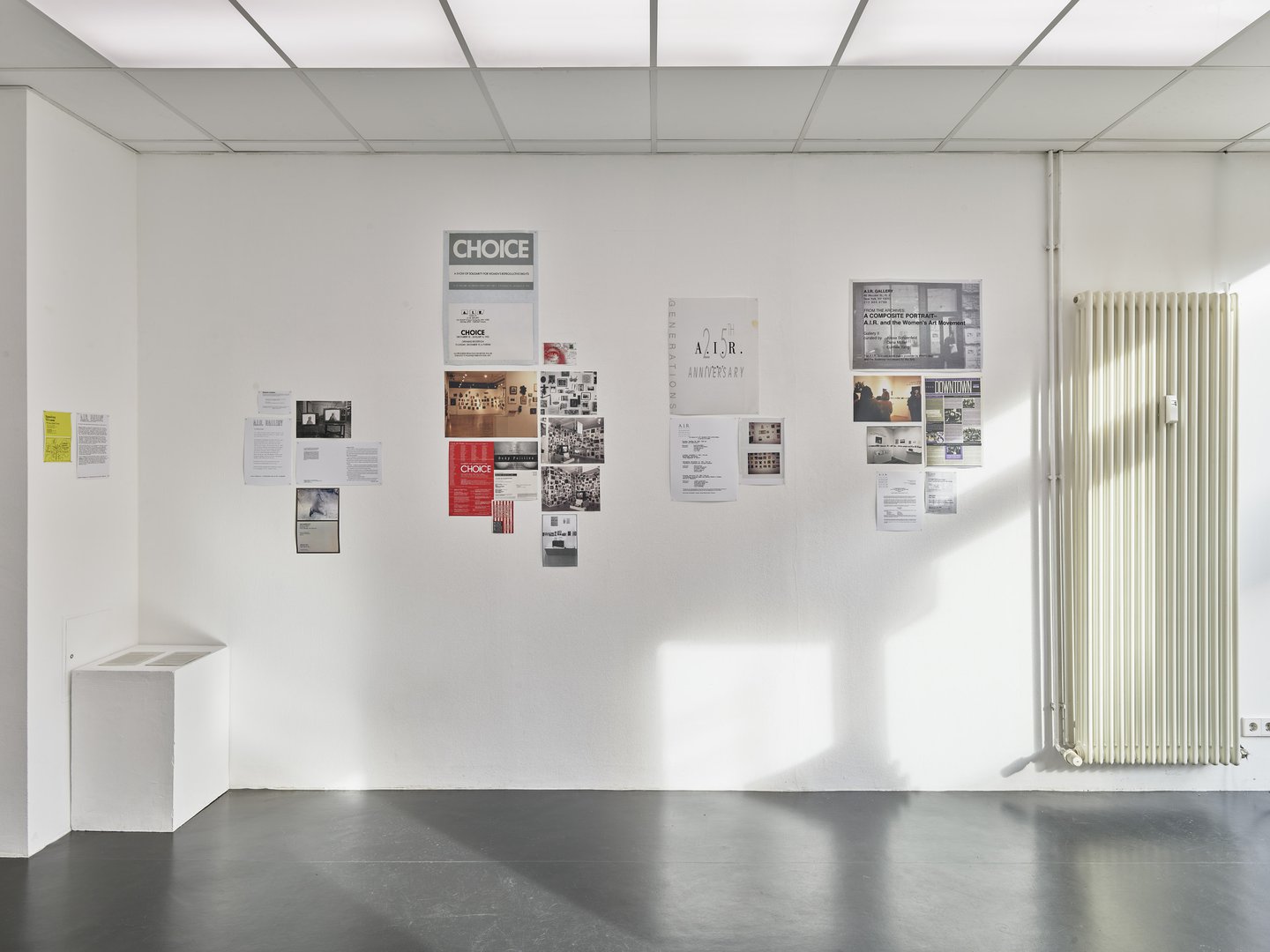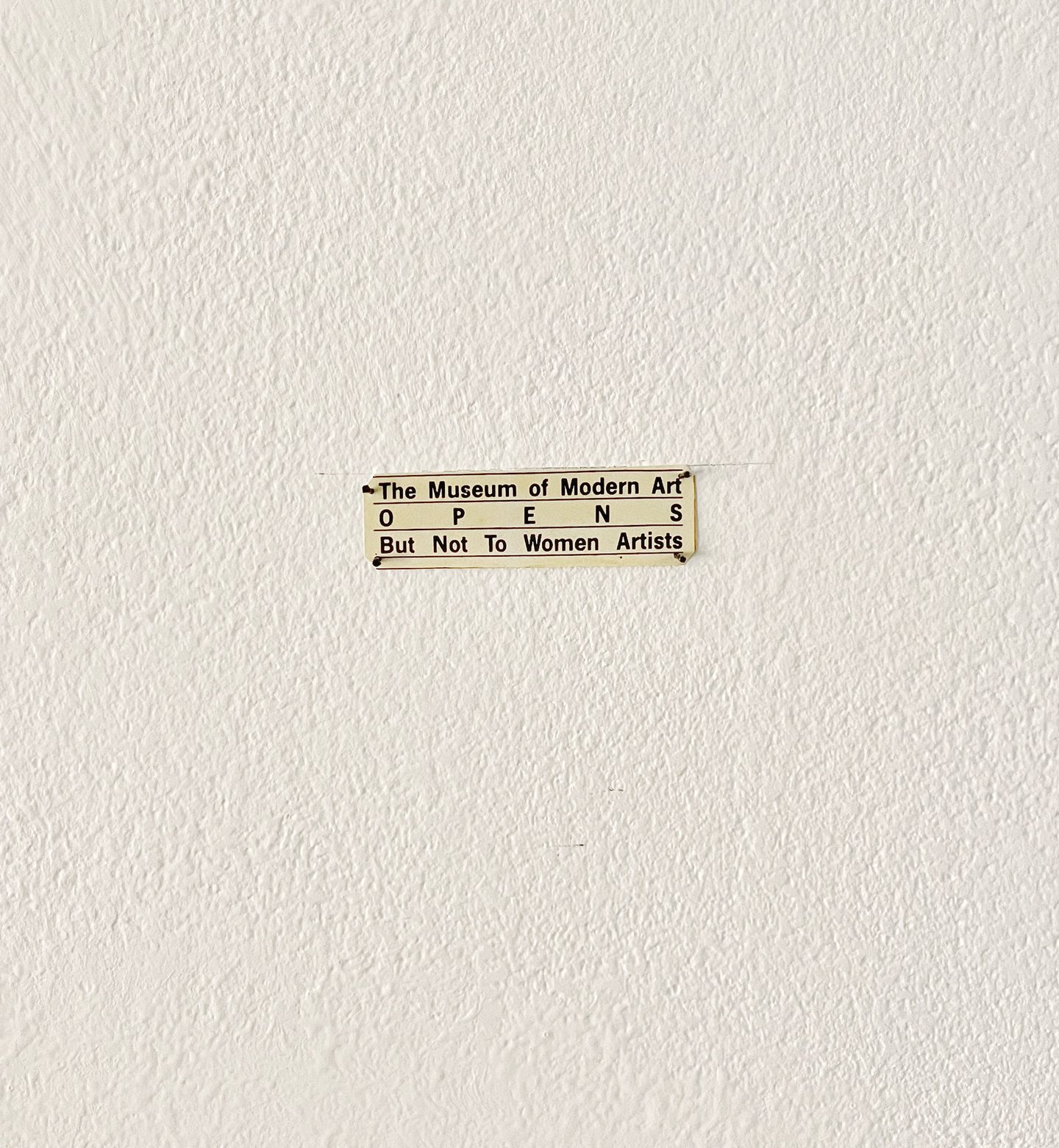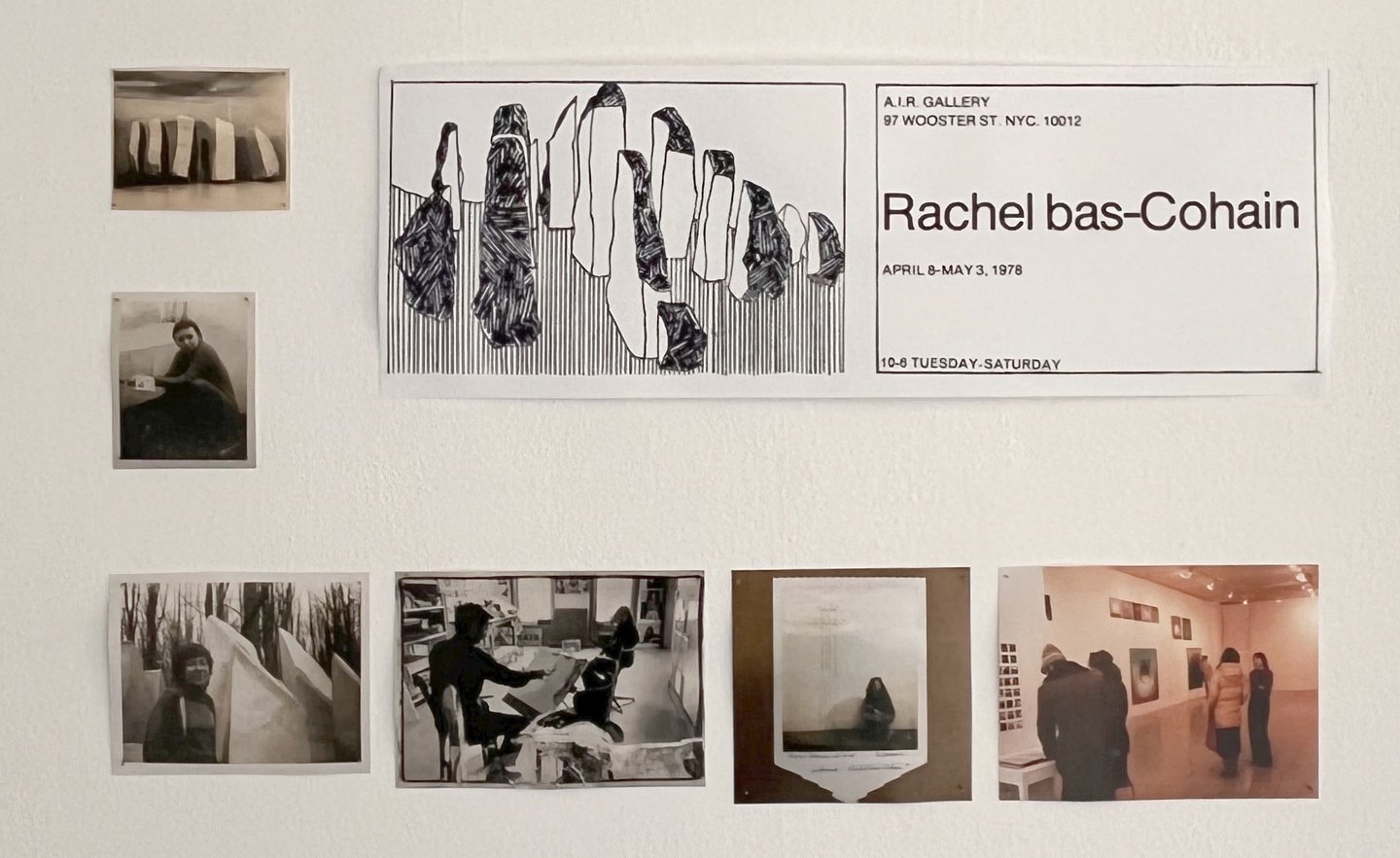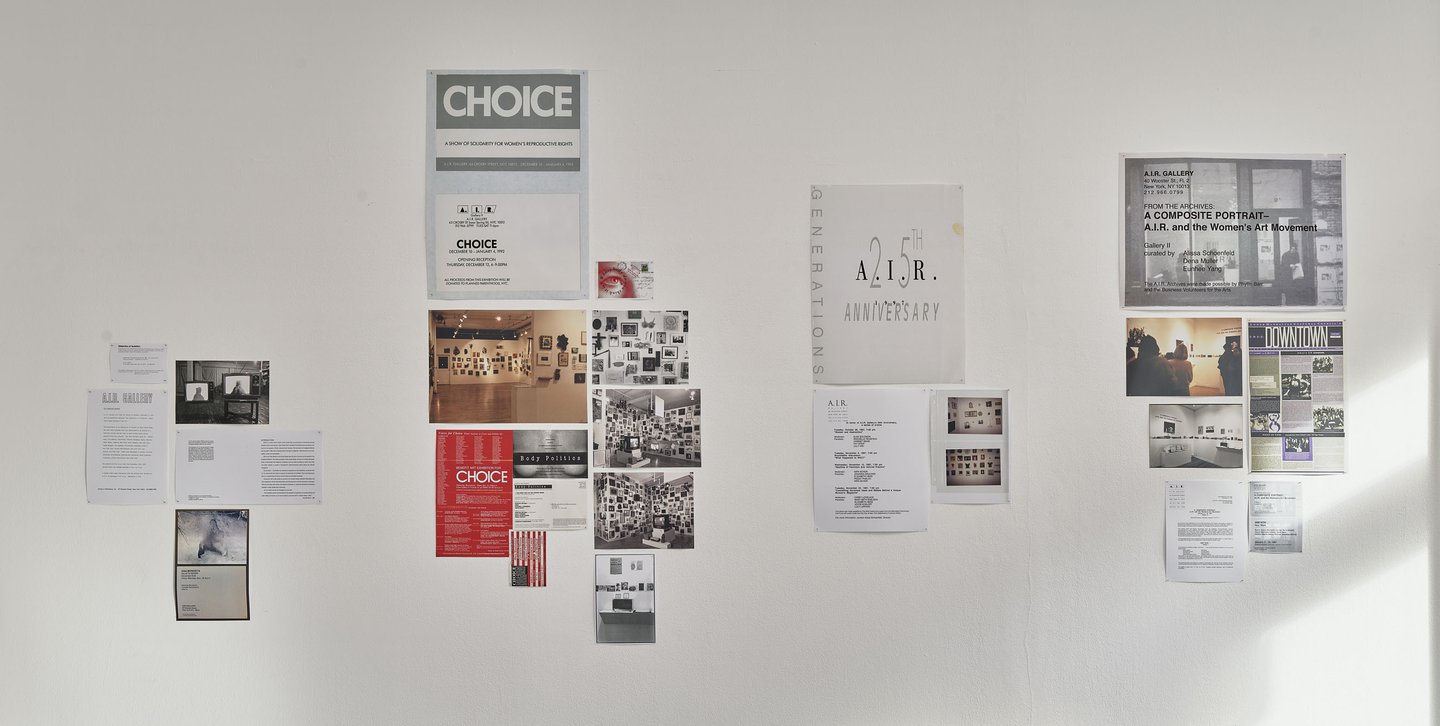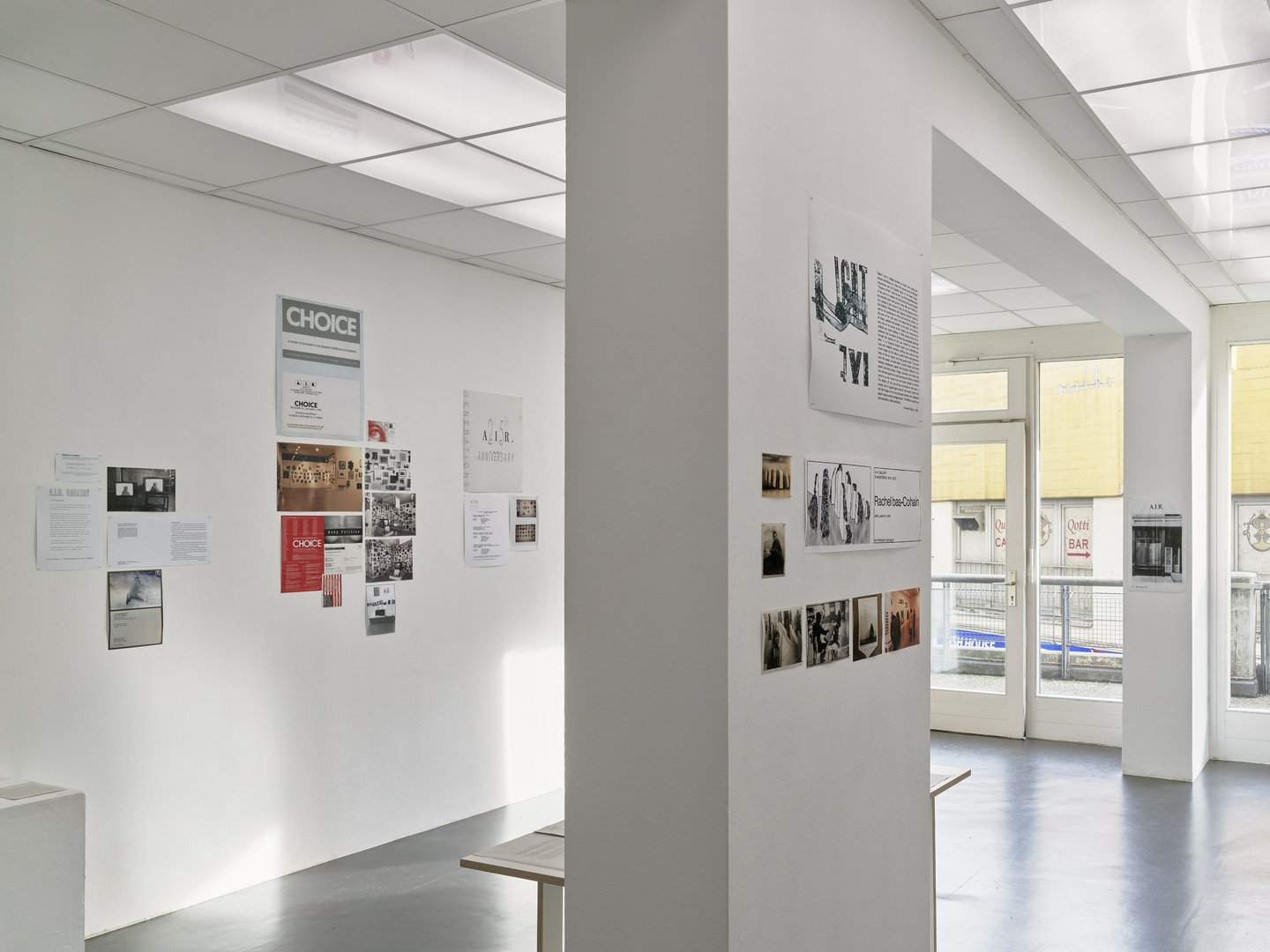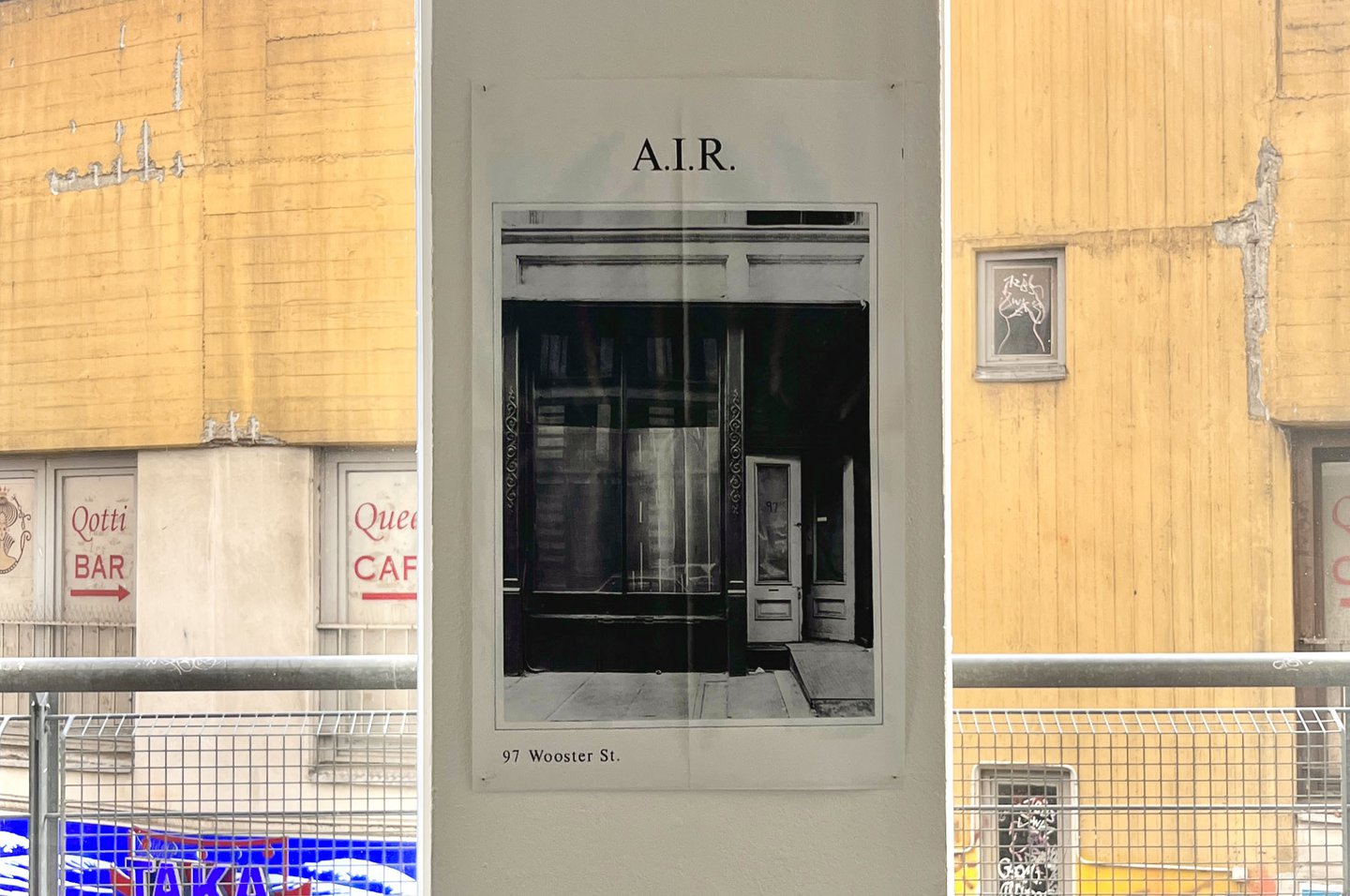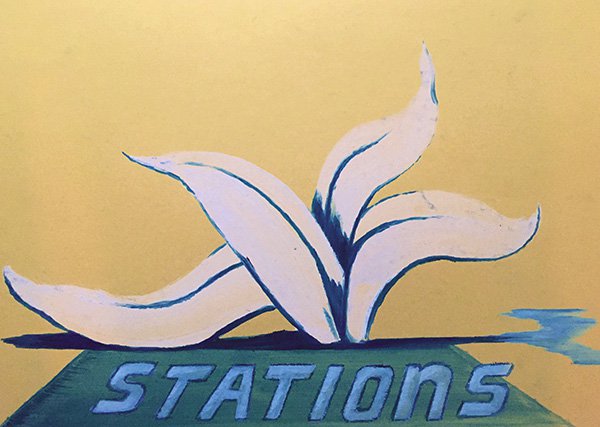The exhibition Making Something From Nothing. Highlights From the A.I.R. Gallery Archives* came together out of two considerations. On the one hand, the fifty year anniversary of the New York art space A.I.R. (Artists in Residence) offers a generous opportunity to look at its long and impressive activity throughout half a century. Founded in 1972 as a non-profit co-op for and by women artists, A.I.R.’s goal was to provide a platform to its members who at the time enjoyed considerably less visibility and chances than their male colleagues. Conceived as a democratic entity, the space has altered, improved, and expanded its activity and vision, tailoring its program to the needs of its current and aspiring female and non-binary members by adding educational and research projects, as well as residencies, to its regular exhibitions and talks.
In 2008, A.I.R. donated its archive to the Fales Library and Special Collections, a branch of the New York University library. The A.I.R. archive offers a compelling and rare insight into the gallery's administrative records; correspondence amongst members and to other artists and art organizations; minutes from member and board meetings; lists of members both local and national; materials relating to programming and curatorial decisions made by the Gallery; exhibition chronologies; letters of protest written to other museums and galleries; audiocassette recordings of various A.I.R.-related events; photographs and slides of exhibitions and individual artists' works.
Although gallery’s history is to be understood in the particular context of the New York and U.S. art scenes, A.I.R.’s struggles and successes, can, however, be looked at as exemplary and as a model that continues to generate discussions and debates. The exhibition takes this opportunity to reflect on how the activity and the policies of the gallery might have changed; on artistic and curatorial self-organization of which A.I.R. provides a generous example throughout its history; on the model A.I.R. has advanced – that of an artistic / curatorial practice that presents itself as a viable alternative to the institutional or for-profit spaces, and which has survived in the art world for decades. We would like to look at how this model, which was initiated out of a need (in the specific context of the U.S. / New York art scene), has evolved, thanks to a reflective and self-regulating process that was driven by a practice based on dialogical exchange and feedback.
On the other hand, the exhibition tries to ground above issues in the present, at STATIONS’ specific location by coupling the archival material with discussions conducted with artists, curators, and peers living and working in Berlin on topics such as the scope and modes of an expanded curatorial practice today; coexistence and collaboration; authorship within collectives; care and community work.
* The title of the exhibition is borrowed from Lucy Lippard’s essay Making Something from Nothing. (Toward a Definition of Women’s „Hobby Art“) published in: "Lucy Lippard, The Pink Glass Swan. Selected Feminist Essays on Art", The New Press, New York, 1995, p.128–138.
///
Die Ausstellung Making Something From Nothing. Highlights From the A.I.R. Gallery Archives* entstand aus zwei Überlegungen heraus. Zum einen bietet das fünfzigjährige Bestehen des New Yorker Kunstraums A.I.R (Artists in Residence) eine großzügige Gelegenheit, einen Blick auf dessen lange und inspirierende Tätigkeit zu werfen. A.I.R. wurde 1972 als gemeinnützige Kooperative von und für Künstlerinnen gegründet und machte sich zum Ziel, ihren Mitgliedern eine Plattform zu bieten, die damals deutlich weniger Sichtbarkeit und Chancen hatten als ihre männlichen Kollegen.
Der Ort versteht sich als basisdemokratisches Netzwerk, dessen Programm und Vision sich entsprechend den Bedürfnissen ihrer weiblichen und nicht-binären Mitglieder stets weiterentwickelte. So wurden regelmäßige Ausstellungen um weitere Formate, wie Vorträge, Rechercheprojekte und Residenzen ergänzt. Im Jahr 2008 übergab A.I.R. sein Archiv der Fales Library and Special Collections, einer Zweigstelle der Bibliothek der New York University. Das A.I.R.-Archiv bietet einen spannenden und seltenen Einblick in die Organisation und Verwaltung der Galerie, die Korrespondenzen zwischen den Mitgliedern und anderen Künstler*innen und Kunstorganisationen, Protokolle von Mitglieds- und Vorstandssitzungen, Mitgliederlisten auf lokaler und nationaler Ebene, Materialien zur Programmgestaltung und zu kuratorischen Entscheidungen der Galerie, Ausstellungschronologien, Protestbriefe an andere Museen und Galerien, Audioaufnahmen verschiedener A.I.R.-bezogener Veranstaltungen, sowie Fotografien und Dias von Ausstellungen und Werken einzelner Künstlerinnen. Die Ausstellung nimmt dies zum Anlass, darüber nachzudenken, wie sich die Tätigkeit und die Politik der Galerie verändert haben; über die künstlerische und
kuratorische Selbstorganisation, die A.I.R. im Laufe seiner Geschichte beispielhaft praktiziert hat; über das Modell das einer künstlerischen und kuratorischen Praxis, die sich als nachhaltige Alternative zu den institutionellen oder profitorientierten Räumen präsentiert und in der Kunstwelt seit Jahrzehnten bestehen konnte. Wir möchten uns anschauen, wie sich dieses Modell, das aus einem Bedürfnis heraus (im spezifischen Kontext der US-amerikanischen / New Yorker Kunstszene) entstanden ist und dank eines reflektierenden und selbstregulierenden Prozesses weitergewachsen ist. Schließlich finden wir es bemerkenswert wie die Praxis von A.I.R. von einem dialogischen Austausch und Feedback angetrieben wurde.
Die Ausstellung Making Something From Nothing. Highlights From the A.I.R. Gallery Archives versucht außerdem die oben genannten Themen in die Gegenwart zu überführen: bei STATIONS wird das Archivmaterial mit Gesprächen verknüpft, die mit Berlin lebenden und arbeitenden Künstler*innen, Kuratorinnen und Kolleg*innen geführt wurden. Schwerpunkte der Diskussionsrunden waren u.a. Themen wie Methoden kuratorischer Praxen heute, Koexistenz und Zusammenarbeit, Autorenschaft in Kollektiven, Care- und Gemeinschaftsarbeit.
* Der Titel der Ausstellung ist Lucy Lippards Essay Making Something from Nothing. (Toward a Definition of Women’s „Hobby Art“) entliehen, veröffentlicht in: "Lucy Lippard, The Pink Glass Swan. Selected Feminist Essays on Art", The New Press, New York, 1995, S. 128–138.
We are very grateful and would like to thank:
A.I.R., Daria Dorosh, Christian Camacho-Light, Taylor Bluestine, Alex Bodea, Antonia Breme, Övül Ö. Durmuşoğlu, Martin Ebner, Anne Fellner, Paz Guevara, Nadira Husain, Franziska Ipfelkofer, Ira Konyukhova, Kristin Loschert, Katharina Marszewski, Seda Mimaroğlu, Alex Müller, Ariane Müller, Didem Pekün, Raluca Popa, Luminița Rațiu, Krishan Rajapakshe, Pauł Sochacki, Ellie de Verdier, Mark van Yetter, Matti Bergmann, Fiona McGovern, Buchhandlung Pro qm, and to all artists that participated in our previous exhibition 22 Women Artists, and who have not already been named above: Anne-Katrin Ahrens, Kamilla Bischof, Ana Botezatu, Marieta Chirulescu, Thea Djordjadze, Sofia Duchovny, Isabelle Fein, Hella Gerlach, Lisa Herfeldt, Anna Holtz, Chiara Minchio, Camilla Steinum, Raphaela Vogel.
Exhibition poster: Seda Mimaroğlu
/
Further reading:
· A.I.R. by Lucy Lippard
· A.I.R. Gallery: A Spacetime Continuum by Dena Muller
· Aloft in Mid A.I.R. by Carey Lovelace
· Heresies Magazine Issue #8: Third World Women (1979)
· Exhibition catalogue of Dialectics of Entanglement: Do We Exist Together?
· Revisiting a Seminal Exhibition on “Third World” Feminist Art at A.I.R. Gallery by Ana Tuazon
· “Do Not Underestimate Our Power”: The Art World Activism of Howardena Pindell, an interactive online exhibition by Ana Tuazon
· Toward a History of Feminism, Art, and Social Movements in the United States by Michelle Moravec, in: Frontiers: A Journal of Women Studies, Vol. 33
· Returning to Dialectics of Isolation : The Non-Aligned Movement, Imperial Feminism, and a Third Way by Sadia Shirazi
· Ad Hoc Committee of Women Artists, Archives at Yale
· Michele Wallace interviewed by Mary Lodu
· Women Students and Artists for Black Art Liberation (WSABAL)
· We Wanted a Revolution: Black Radical Women, 1965–85, exhibition at Brooklyn Museum
· An Illustrated Guide to Linda Nochlin’s “Why Have There Been No Great Women Artists?”, by Tiernan Morgan & Lauren Purje
· From 1971: Eight Artists Reply: Why Have There Been No Great Women Artists?
· Linda Nochlin on “Why Have There Been No Great Women Artists”, by Ellen C. Caldwell
· Women's Work: A Conversation with Lucy Lippard and Harmony Hammond
· From the Archives: Sexual Politics, Art Style, by Lucy Lippard
· A Finding Aid to the Lucy R. Lippard Papers, 1930s-2007, bulk 1960s-1990, in the Archives of American Art
· Collections and Finding Aids, Miriam Schapiro Papers, circa 1891-2019
· Ana Mendieta at A.I.R. Gallery, 1977–82, Kat Griefen, in: Women & Performance: a journal of feminist theory, Vol. 21, No. 2, July 2011, 171–181, Routledge
· New Observations, "Color", Guest edited by Adrian Piper, Issue 97, 1993
· Rise Up Feminist Archive
/
A temporary satellite of the exhibition will be on display in the strawberry booth on Annenstrasse as part of Musée de la Fraise.
September 14 – 25, 2022
Program:
Guided tour and walk
September 17 & 18, 2022 / 2pm
Start: STATIONS
End: strawberry booth / Heinrich-Heine-Platz 6
ca 45 min.
More events to be announced soon.
Kindly supported by:
Senatsverwaltung für Kultur und Europa
Kulturprojekte / Berlin Art Week 2022
